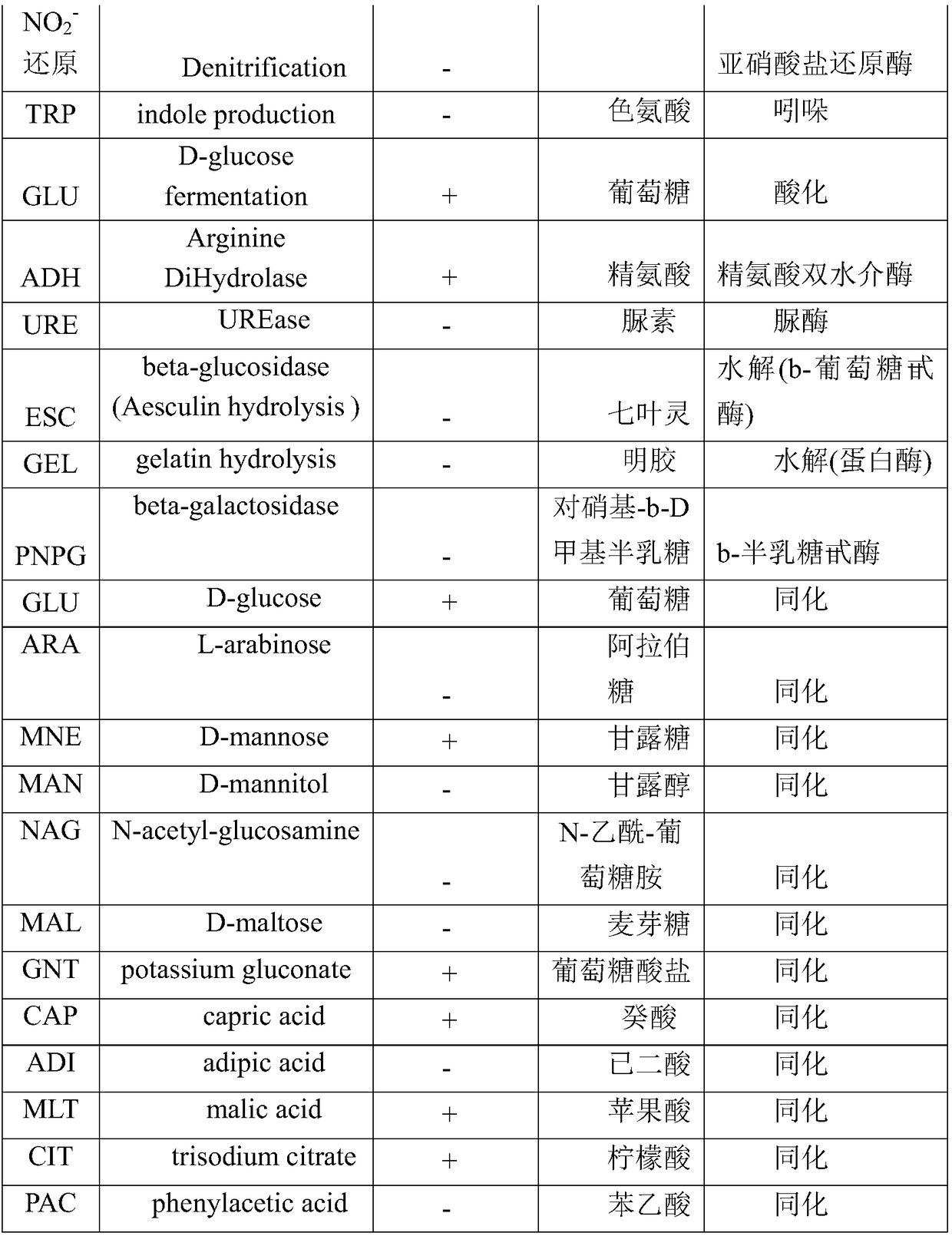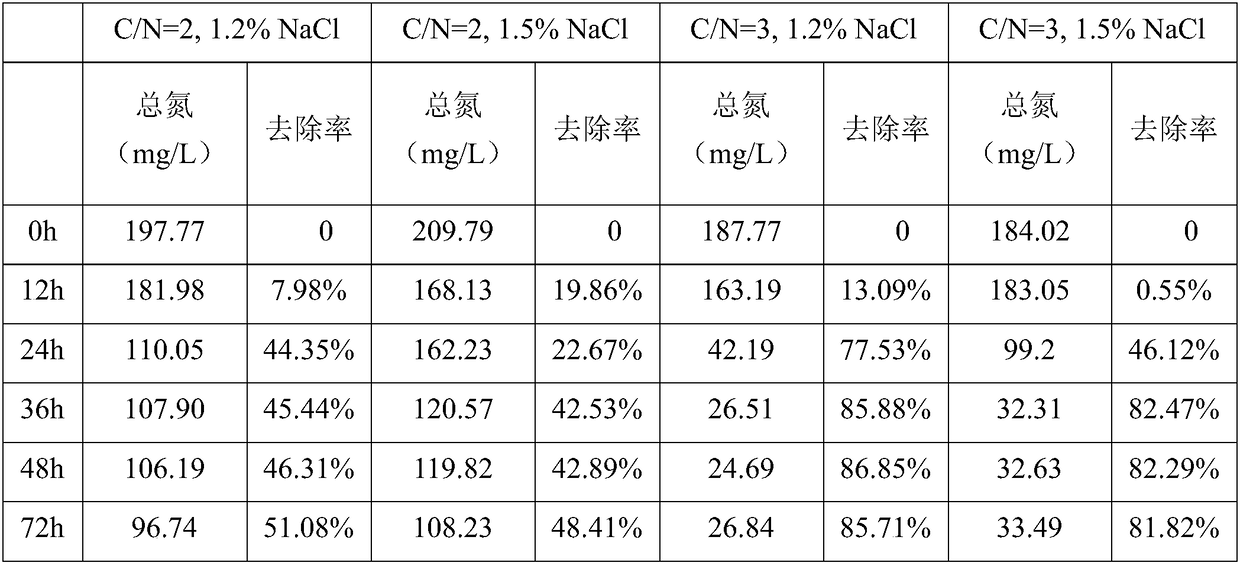Aerobic denitrification strain and application thereof
A technology of aerobic denitrifying bacteria and strains, which is applied in the field of microorganisms and achieves the effects of wide application prospects, high total nitrogen removal rate, and strong denitrification ability.
- Summary
- Abstract
- Description
- Claims
- Application Information
AI Technical Summary
Problems solved by technology
Method used
Image
Examples
Embodiment 1
[0015] Embodiment 1 Isolation and identification of the aerobic denitrification bacterial strain of the present invention
[0016] 1.1 Medium and method
[0017] 1.1.1 Medium
[0018] Denitrification liquid medium: KNO 3 2g, KH 2 PO 4 0.5g, MgSO 4 0.25g, 1000mL of distilled water, adjust the pH value to 7.0-7.2, then add sodium acetate (control different C / N), and sterilize at 121°C for 20min.
[0019] Denitrification solid medium: Add 15g of agar powder per liter of denitrification liquid medium.
[0020] 1.1.2 Experimental method
[0021] 10 g of surface soil samples were collected from paddy field soil, briefly crushed by a tissue breaker, then added to a 500 mL Erlenmeyer flask containing 100 mL of denitrification liquid medium, and cultured with shaking at 30 °C and 120 rpm for 24 h. After continuous gradient dilution and gradually reducing the carbon-nitrogen ratio of the medium, a strain of bacteria was isolated and named XPS-1.
[0022] Propagate the isolate...
Embodiment 2
[0033] Example 2 Effect of salinity and carbon-nitrogen mass ratio on the aerobic denitrification of bacterial strain XPS-1
[0034] This embodiment explores the influence of carbon-nitrogen ratio and salinity on the denitrification effect of aerobic denitrification strain XPS-1. During the experiment, sodium acetate (CH 3 COONa) as the sole carbon source, potassium nitrate (KNO 3 ) is the only nitrogen source, by adjusting the quality of sodium acetate to change the C / N ratio (mass ratio) in the denitrification liquid medium, control C / N=2 and C / N=3, and regulate the denitrification liquid medium with NaCl Salinity, so that the mass fraction of NaCl is 1.2% and 1.5%, respectively, the activated bacterial classification is inoculated into the denitrification liquid medium according to the inoculum size of 5%, at 25°C and 120rpm (DO>7mg / L) Under culture, the total nitrogen concentration and total nitrogen removal efficiency in the culture medium were measured every 12 hours. T...
Embodiment 3
[0039] The influence of embodiment 3pH on bacterial strain XPS-1 aerobic denitrification
[0040] On the basis of Example 2, the optimum carbon-to-nitrogen ratio (mass ratio) of the aerobic denitrification strain XPS-1 of the present invention is 3, and the optimum salinity is 1.2% NaCl. Therefore, the present embodiment selects C / N =3(KNO 3 as the sole nitrogen source, CH 3 COONa is the only carbon source) and the denitrification medium whose salinity is 1.2%NaCl, adjust the pH value of the denitrification medium to be pH 5, pH 6, pH7, pH 8 and pH 9 respectively, and the bacterial classification after activation is according to 5% of the inoculum was inoculated into aerobic denitrification enrichment medium with different pH, cultivated under the culture conditions of 25°C and 120rpm (DO>7mg / L), and measured the total nitrogen concentration and removal of The total nitrogen efficiency, the measurement results are shown in Table 2.
[0041] Table 2
[0042]
[0043] As ...
PUM
 Login to View More
Login to View More Abstract
Description
Claims
Application Information
 Login to View More
Login to View More - R&D
- Intellectual Property
- Life Sciences
- Materials
- Tech Scout
- Unparalleled Data Quality
- Higher Quality Content
- 60% Fewer Hallucinations
Browse by: Latest US Patents, China's latest patents, Technical Efficacy Thesaurus, Application Domain, Technology Topic, Popular Technical Reports.
© 2025 PatSnap. All rights reserved.Legal|Privacy policy|Modern Slavery Act Transparency Statement|Sitemap|About US| Contact US: help@patsnap.com



